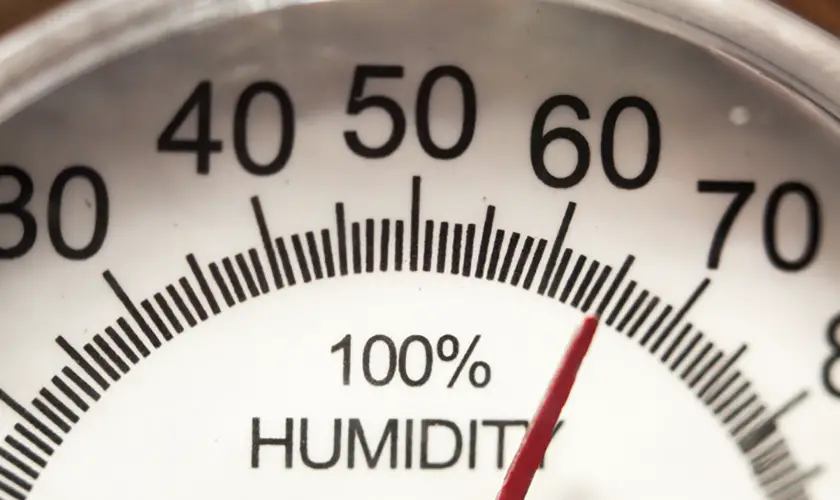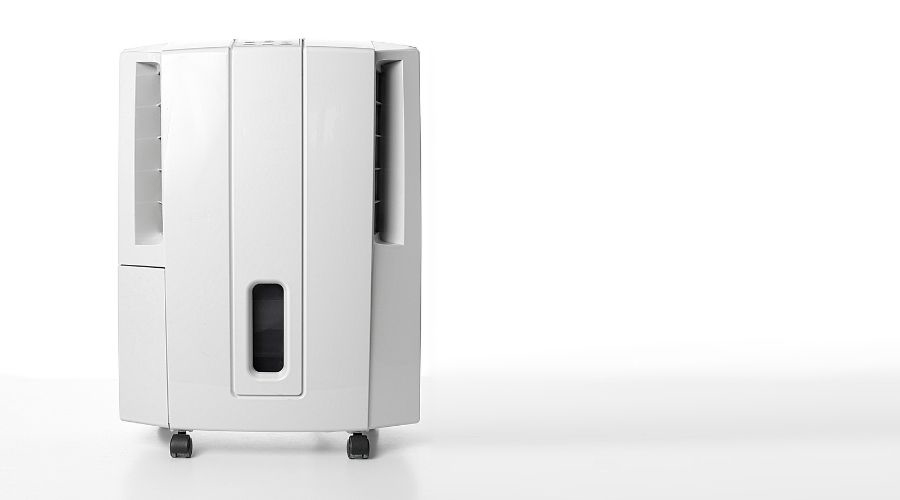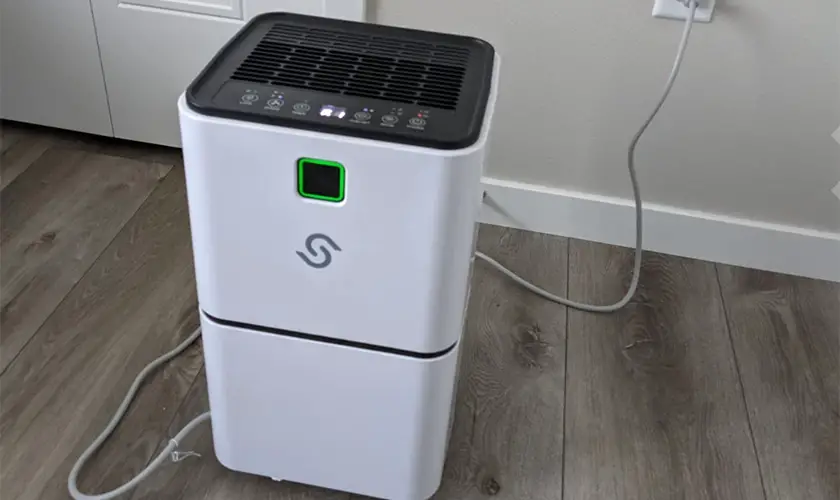
When asked what a dehumidifier does, most people don’t think about the importance of having a dehumidifier until they start to experience the effects of too much humidity in their home.
Excess moisture can cause problems, from mold and mildew growth to wood rot and corrosion. A dehumidifier can help you avoid these problems by removing excess moisture from the air.
What Does a Dehumidifier Do?
A dehumidifier eliminates moisture from the air inside your home. A dehumidifier might help reduce symptoms and make breathing easier if you have asthma or allergies. Dehumidifiers can be centrally installed or freestanding appliances, depending on their intended purpose.
How a Dehumidifier Works
Like an air conditioner, dehumidifiers draw warm air currents through the refrigerated coils. Warm air contracts as it passes through the coils, causing condensation. Condensation forms on the coils, dripping into a collection container. Once the container is full, the unit automatically turns off until the next cycle.
Cooler, drier air flows out of the dehumidifier through the other side of it. You’ll notice no fan on the other end of the dehumidifying system. Instead, the cool air simply exits the device. A dehumidifier reduces moisture from the air, lowering the room’s humidity level.
You may use a dehumidifier if you live in a humid climate. Humidity levels above 60% are considered unhealthy. However, most homes require only 30% to 50% relative humidity.
You’ll find that most dehumidifiers include a built-in humidistat that allows you to adjust the relative humidity level in your home. Some homeowners prefer to keep the humidity below 50% since high humidity can cause mold growth.
To determine whether or not a dehumidifier is necessary, measure the relative humidity in your home. Consider adding a dehumidifier to your home if the reading is above 60%.
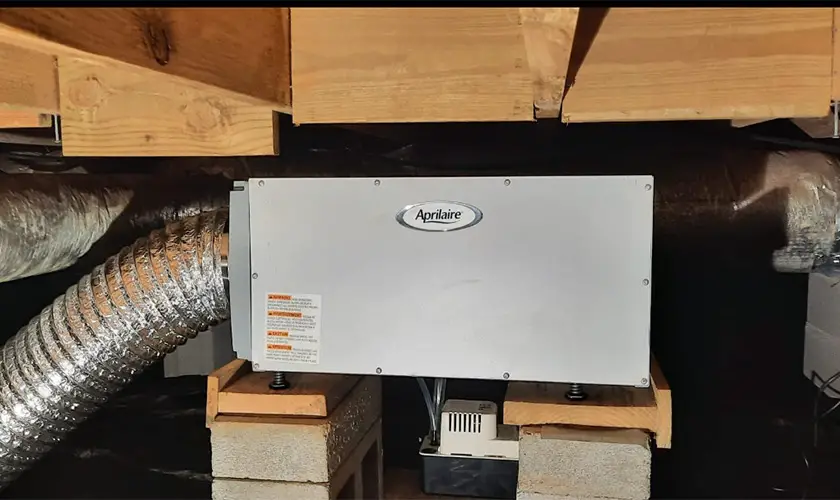
Benefits of Using a Dehumidifier
So we know how a dehumidifier works, but what is a dehumidifier used for?
Dehumidifiers are used to reduce the moisture level in a room. Humidity can cause problems such as mold and mildew, which can grow quickly in high-humidity conditions. These devices extract moisture from the air and release it outside. Therefore, they greatly reduce the risk of mold and mildew developing.
The key benefits include:
- Reduce Mildew Mold Growth
- Reduce Allergy Triggers & Asthma Symptoms
- Improves Indoor Comfort
- Improves Indoor Air Quality
- Prevents Wood Rot & Decay
- Prevent Musty Smells
- Reduce Indoor Relative Humidity
- Reduce Insect Activity
- Dry Wet Spaces
- Reduces Dust Mites
- Lowers Energy Costs
- Dry Wet Clothes
- Protect Household Items
Humidity can also trigger allergies. Allergies can develop due to dust particles floating around in the air. Dehumidifiers help keep the dust down and reduce the chances of triggering allergies.
Running a dehumidifier can save money on heating and cooling bills. Air conditioning units work hard to maintain a comfortable temperature inside homes and offices. However, the unit will struggle to keep the air cool and fresh if there isn’t enough airflow. A dehumidifier removes excess moisture from the air, allowing the AC system to operate more effectively.
Dehumidifiers also help to improve the efficiency of HVAC systems. An HVAC system runs more efficiently if it doesn’t have to work as hard to cool the air. Dehumidification allows the HVAC system to do its job better and thus saves energy.
Dehumidifying the air also makes sense if you live in a humid environment. High humidity can lead to condensation on windows, causing them to fog up. Dehumidifiers remove a pre-determined amount of moisture from the air, preventing this problem.
Dehumidifiers reduce mildew mold growth, allergy symptoms, indoor comfort, indoor air quality, wood rot, and decay prevention, prevent musty odors, reduce insect activity, dry wet spaces, protect household items, lower energy costs, dry wet clothes, and protect against dust mites.
A dehumidifier removes moisture from the air, reduces moisture levels, and keeps homes drier. You’ll find dehumidifiers at most hardware stores. They typically come in two sizes: small and large. Small dehumidifiers usually hold 1 cubic foot of water, while larger models hold 3 cubic feet.
You may not think that a dehumidifier is necessary if you live somewhere without humidity, but it helps keep homes drier. Moisture collects inside walls, furniture, carpets, clothing, shoes, etc., causing mildew mold growth, allergies, asthma symptoms, and musty odor.
It reduces the number of dust mites living in your home. These tiny critters thrive in moist environments, congregating in places with lots of moisture. By drying out the air, a dehumidifier prevents dust mites from thriving.
There are two types of dehumidifiers: whole-house units and portable units. A whole-house dehumidifier removes excess humidity from large 2500 square feet or more areas, whereas portable units only remove humidity from specific rooms. Portable dehumidifiers can be used indoors, including in bedrooms, bathrooms, laundry rooms, living rooms, or kitchens.
The dehumidifier capacity is measured in how many pints of water are removed daily.
The whole house dehumidifier works based on continuous drainage and has no bucket to empty. All portable units have a bucket collection bin, and some have an optional continuous drainage port.
Dehumidifiers Can Reduce Asthma & Allery Symptoms
Asthma is a condition where the lungs become inflamed and produce excess mucus. Mucus is produced naturally to protect against allergens, irritants, and infections. However, if mucus production becomes excessive, it can cause breathing problems.
A dehumidifier removes excessive humidity from the air, reducing the chances of developing allergies and asthma symptoms. No scientific evidence supports the use of a dehumidifier as an effective treatment for chronic asthma; however, using one may reduce the severity of allergic reactions and decrease the frequency of asthma attacks.
Dehumidifiers Improve Outdoor Air Quality
A dehumidifier is a device used to remove moisture from the air. Removing water vapor from the air helps keep indoor air quality high and reduces the need for air conditioning.
Indoor air quality is affected by several factors, including temperature, humidity, and airborne particles. One of the most common problems associated with poor indoor air quality is excessive dampness. Dampness causes mold growth, leading to health issues like asthma attacks and respiratory infections.
Mold spores thrive in warm, moist conditions, so keeping your home dry is essential to maintaining healthy indoor air quality. You can prevent mold growth by using a dehumidifier to lower the humidity level inside your home.
You’ll find dehumidifiers at major retailers like Home Depot, Lowe’s, and Amazon.com. These devices work well in homes where there is no central heating system. However, if you live in a cold climate, you should consider installing a heat pump. Heat pumps are more efficient than traditional systems and require no maintenance.
Are There Disadvantages to Using a Dehumidifier?
Dehumidifiers are great for keeping homes cool during hot summer months. However, if you live in a dry climate or use gas or electricity for heating, you probably won’t need one. A dehumidifier can cause problems for those living where the air is already dry.
Pneumonia can become worse if the air becomes too dry. Dry conditions can also worsen cases of eczema, asthma, and allergies. You should avoid using a dehumidifier if you have any respiratory issues.
Removing too much moisture causes dry skin and other health conditions.
Your skin and hair can also be affected if your home becomes too dry. Those with atopic dermatitis (eczema) might experience flare-ups in an arid environment.
You should stay hydrated if you use a dehumidifier. If you have a dry coughing or stuffy nose, you might find that running a dehumidifier makes matters worse.
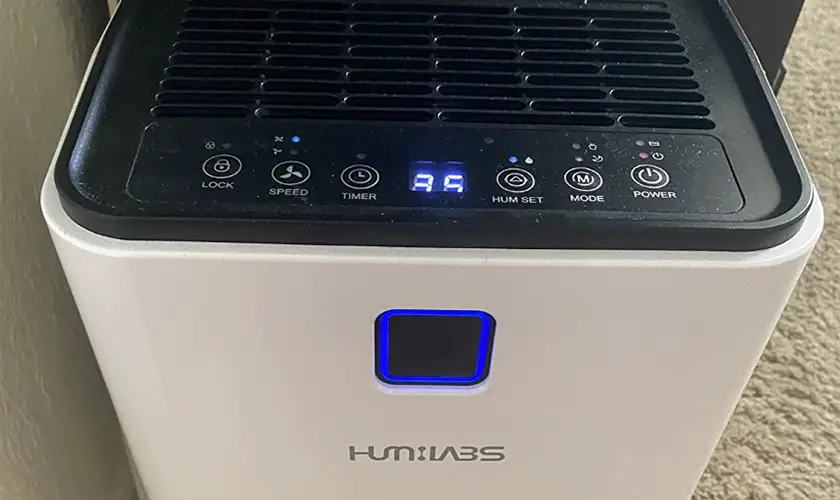
Signs You May Need A Dehumidifier
- Anyone living in a humid climate knows it can be difficult to breathe during summer. Humidity makes breathing hard, especially if you have asthma or other respiratory system illnesses.
- A dehumidifier works well in homes with a lot of moisture in the air. These conditions include basements, crawl spaces, attics, garages, and unfinished rooms.
- You should consider getting a dehumidifier if anyone in the house has a prolonged allergy season. Pollen, mold spores, animal dander, dust mites, and other allergens trigger allergies.
- Your home may experience a sudden change in humidity levels due to recent weather changes. If you’ve recently moved, you may notice that your allergies seem to be worsening.
- There’s a persistent damp smell in your home where you frequently stay. Dampness can cause mildew growth, which is unpleasant and can lead to health problems.
- You notice water leakage after heavy rainfalls. Water leaking through walls and ceilings can damage furniture, carpets, floor coverings, and other items.
- You notice muggy air in an area of your house where you spend time. Misting fans can reduce the humidity level in an enclosed room, but they don’t eliminate it.
- You have persistent symptoms of respiratory illnesses, such as coughing and sneezing. Persistent coughs and wheezes indicate that you may have a chronic lung condition.
- Anyone in the home has an allergic reaction to dust mites. Dust mites thrive in moist environments, making them common culprits behind indoor allergies.
- Anyone in the household has an allergy to dust. Dust mite allergies are very common among children and adults alike.
- You have persistent signs of pest infestations, such as spiders, roaches, moths, and silverfish. Pests can carry bacteria and viruses that can spread throughout the home.
- You may suffer from a prolonged allergy season if you live in humid environments.
What Does a Dehumidifier Do FAQs
When should you use a dehumidifier?
Dehumidifiers are used when humidity levels are higher than 50%. Dehumidifiers work by lowering the humidity in humid air. They work well at reducing moisture in unconditioned basements, crawl spaces, and garages.
What are the disadvantages of a dehumidifier?
Dehumidifiers can be expensive to purchase and operate. They require regular maintenance, such as emptying the water tank and cleaning the filter. Whole-house dehumidifiers usually require professional service maintenance twice a year.
Does a dehumidifier make a room cooler?
While dehumidifiers don’t produce cool air as air conditioners do, they can make a room feel cooler because they take in warm, moist air, remove excessive moisture, and output dry air that can feel cooler.


